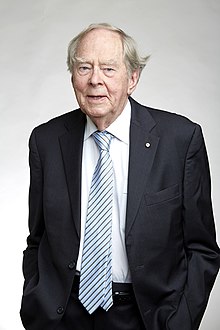
Donald Arthur Glaser was an American physicist, neurobiologist, and the winner of the 1960 Nobel Prize in Physics for his invention of the bubble chamber used in subatomic particle physics.

Froth flotation is a process for selectively separating hydrophobic materials from hydrophilic. This is used in mineral processing, paper recycling and waste-water treatment industries. Historically this was first used in the mining industry, where it was one of the great enabling technologies of the 20th century. It has been described as "the single most important operation used for the recovery and upgrading of sulfide ores". The development of froth flotation has improved the recovery of valuable minerals, such as copper- and lead-bearing minerals. Along with mechanized mining, it has allowed the economic recovery of valuable metals from much lower grade ore than previously.

In the field of extractive metallurgy, mineral processing is the process of separating commercially valuable minerals from their ores. Depending on the processes used in each instance, it is often also known as ore dressing or ore milling.
In the mining industry or extractive metallurgy, beneficiation is any process that improves (benefits) the economic value of the ore by removing the gangue minerals, which results in a higher grade product and a waste stream (tailings). There are many different types of beneficiation, with each step furthering the concentration of the original ore.
The Prime Minister's Prizes for Science are annual Australian awards for outstanding achievements in scientific research, innovation, and teaching. The prizes have been awarded since 2000, when they replaced the Australia Prize for science.
The Australian Academy of Technology and Engineering (ATSE) is a learned academy that helps Australians understand and use technology to solve complex problems. It was founded in 1975 as one of Australia's then four learned academies. Its original name was the 'Australian Academy of Technological Sciences', but in 1987 the name was lengthened to include Engineering, as 'Australian Academy of Technological Sciences and Engineering'. In 2015, the Academy adopted a new business name, the 'Australian Academy of Technology and Engineering', reserving the Australian Academy of Technological Sciences and Engineering as its company name.
Foam fractionation is a chemical process in which hydrophobic molecules are preferentially separated from a liquid solution using rising columns of foam. It is commonly used, albeit on a small scale, for the removal of organic waste from aquariums; these units are known as "protein skimmers". However it has much broader application in the chemical process industry and can be used for the removal of surface active contaminants from waste water streams in addition to the enrichment of bio-products.
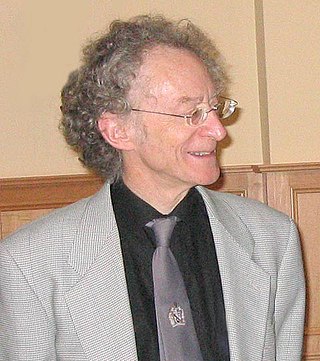
Robin John Batterham AO FREng FAA FTSE is an Australian scientist specialising in chemical engineering. He was the Chief Scientist of Australia from 1999 to 2006.
Gordon Wallace, AO, FAA, FTSE, FIOP, FRACI is a leading scientist in the field of electromaterials. His students and collaborators have pioneered the use of nanotechnology in conjunction with organic conductors to create new materials for energy conversion and storage as well as medical bionics. He has developed new approaches to fabrication that allow material properties discovered in the nano world to be translated into micro structures and macro scopic devices.
Richard A. Williams OBE FREng FTSE, FRSE is a British academic and engineer. He is the Principal and Vice-Chancellor of Heriot-Watt University. He took up this position on 1 September 2015. He is a chemical engineer. He was Vice President and a Trustee of the Royal Academy of Engineering.
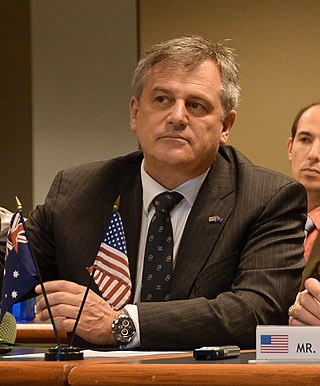
Alexander ‘Alex’ Zelinsky, is an Australian computer scientist, systems engineer and roboticist. His career spans innovation, science and technology, research and development, commercial start-ups and education. Professor Zelinsky is Vice-Chancellor and President of the University of Newcastle joining the university in November 2018. He was the Chief Defence Scientist of Australia from March 2012 until November 2018. As Chief Defence Scientist he led Defence Science and Technology for Australia's Department of Defence.
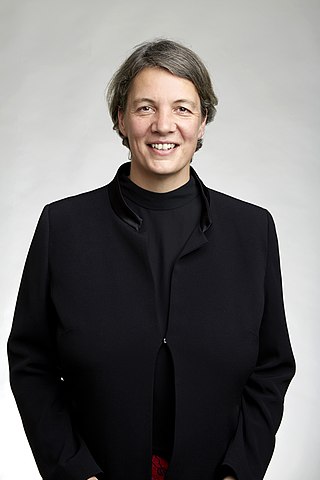
Michelle Yvonne Simmons, is a Scientia Professor of Quantum Physics in the Faculty of Science at the University of New South Wales and has twice been an Australian Research Council Federation Fellow and is an Australian Research Council Laureate Fellow. She is the Director of the Australian Research Council Centre of Excellence for Quantum Computation & Communication Technology and is recognised internationally as the creator of the field of atomic electronics. She was the inaugural editor-in-chief of npj Quantum Information, an academic journal publishing articles in the emerging field of quantum information science. On 25 January 2018, Simmons was named as the 2018 Australian of the Year for her work and dedication to quantum information science. On 10 June 2019, Simmons was appointed an Officer of the Order of Australia (AO) in the 2019 Queen's Birthday Honours in recognition of her "distinguished service to science education as a leader in quantum and atomic electronics and as a role model."

The Jameson Cell is a high-intensity froth flotation cell that was invented by Laureate Professor Graeme Jameson of the University of Newcastle (Australia) and developed in conjunction with Mount Isa Mines Limited.

Veena Sahajwalla is an inventor and Professor of Materials Science in the Faculty of Science at UNSW Australia. She is the Director of the UNSW SM@RT Centre for Sustainable Materials Research and Technology and an Australian Research Council Laureate Fellow.
Catherine Patricia Foley is an Australian physicist. She is the Chief Scientist of Australia, before which she had been the chief scientist for the Commonwealth Scientific and Industrial Research Organisation (CSIRO) since August 2018.
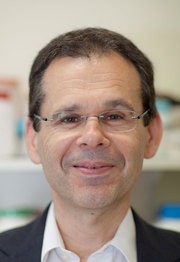
Anthony Steven Weiss AM PhD FRSC FTSE FRSN FRACI, FTERM, FBSE is a university researcher, company founder and entrepreneur. He is the leading scientist in human tropoelastin research and synthetic human elastin. He holds the McCaughey Chair in Biochemistry, heads the Charles Perkins Centre Node in Tissue Engineering and Regenerative Medicine, and is Professor of Biochemistry and Molecular Biotechnology at the University of Sydney. His discoveries are on human elastic materials that accelerate the healing and repair of arteries, skin and 3D human tissue components. He is a Fellow of the Royal Society of Chemistry. Weiss is on the editorial boards of the American Chemical Society Biomaterials Science and Engineering, Applied Materials Today (Elsevier), Biomaterials, Biomedical Materials, BioNanoScience (Springer) and Tissue Engineering. He is a biotechnology company founder, promoter of national and international technology development, and has received national and international awards, including the Order of Australia.

Jan Dean Miller is an American engineer, currently Distinguished Professor of metallurgical engineering and Ivor D. Thomas Endowed Chair at University of Utah.

Ezio Rizzardo is a polymer chemist at the Australian research agency CSIRO.

Brian John O'Brien was an Australian physicist and space scientist. He is best known for his "research into lunar dust and the challenges it presents for exploration of the Moon." He "highlighted how hazardous it was for astronauts and their equipment." Five experiments designed by him were placed on the moon by the Apollo 11 Mission. One measured radiation, the others were concerned with moon dust.
